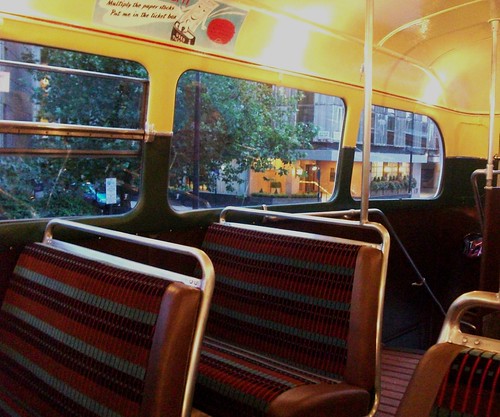28 Mar 2013
14 Mar 2013
Do 26 metre vehicles give higher seating capacities?
I have tried without success to convince people that the proposed IEP length of 26 metres is too long for vehicles on the UK system.
One of the arguments being put forward for the extra length is that the seating capacity of a train is higher if the vehicles are longer. I would have expected this but when the calculations are done I am left wondering.
So what is the difference in the number of seats between 12 x 22 metre vehicles and 10 x IEP vehicles, of almost identical length? To make a fair comparison you have to assume equal seating density. Because the IEP has its luggage space outside what can be termed the "furnishable area", when it can actually be between seat backs within the furnishable area, this comparison is not so easy to make. However, furnishable area is a fair proxy.
The furnishable area in a 22 metre vehicle can be taken as 17.1 metres, the rest of the space being occupied by a toilet, luggage shelves, vestibules and a total of 1 M crumple zone. This gives a the total in 12 vehicles is 205 metres.
What about the IEP? IEP-TECH-REQ-35-Issue 05 (Technical specification for IEP published by DfT) states: "As a minimum the Furnishable Space length shall be 144m for a nominally 208m long IEP Unit."
That is 8 cars, which suggests the average furnishable space in an IEP vehicle is 18 metres. But there are two driving ends in the 8 car set, and that suggests that an intermediate vehicle will have 20 metres of furnishable space, perhaps 21.5 metres at the most. Which adds up to 200 to 215 metres in 10 vehicles. In other words there is no significant difference. That surprises me.
My own preference would have been either articulation or to have the longest vehicle that was possible with an external width of 2.80 metres with a go-almost-anywhere capability. Allowing 1.90 metres per bay, that gives a 9 bay vehicle (17.1 metres) with a further 1.2 metres for a toilet ie a total of 18.3 metres. A wheelchair access toilet can be provided in a vehicle with 8 1/2 seating bays. You then have 2 x 1.2 metres for the vestibules and a further 2 x 0.5 metres for crumple zones.
26 metres would be nice to have but it would need a new railway to fit them in without undue compromise.
One of the arguments being put forward for the extra length is that the seating capacity of a train is higher if the vehicles are longer. I would have expected this but when the calculations are done I am left wondering.
So what is the difference in the number of seats between 12 x 22 metre vehicles and 10 x IEP vehicles, of almost identical length? To make a fair comparison you have to assume equal seating density. Because the IEP has its luggage space outside what can be termed the "furnishable area", when it can actually be between seat backs within the furnishable area, this comparison is not so easy to make. However, furnishable area is a fair proxy.
The furnishable area in a 22 metre vehicle can be taken as 17.1 metres, the rest of the space being occupied by a toilet, luggage shelves, vestibules and a total of 1 M crumple zone. This gives a the total in 12 vehicles is 205 metres.
What about the IEP? IEP-TECH-REQ-35-Issue 05 (Technical specification for IEP published by DfT) states: "As a minimum the Furnishable Space length shall be 144m for a nominally 208m long IEP Unit."
That is 8 cars, which suggests the average furnishable space in an IEP vehicle is 18 metres. But there are two driving ends in the 8 car set, and that suggests that an intermediate vehicle will have 20 metres of furnishable space, perhaps 21.5 metres at the most. Which adds up to 200 to 215 metres in 10 vehicles. In other words there is no significant difference. That surprises me.
My own preference would have been either articulation or to have the longest vehicle that was possible with an external width of 2.80 metres with a go-almost-anywhere capability. Allowing 1.90 metres per bay, that gives a 9 bay vehicle (17.1 metres) with a further 1.2 metres for a toilet ie a total of 18.3 metres. A wheelchair access toilet can be provided in a vehicle with 8 1/2 seating bays. You then have 2 x 1.2 metres for the vestibules and a further 2 x 0.5 metres for crumple zones.
26 metres would be nice to have but it would need a new railway to fit them in without undue compromise.
Subscribe to:
Comments (Atom)

